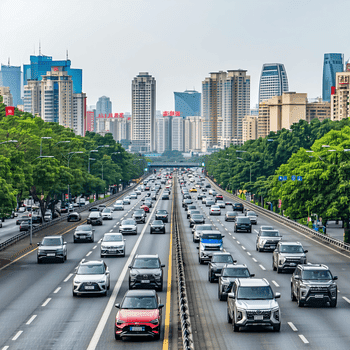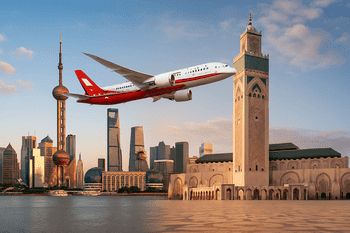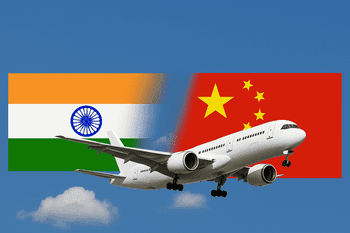
China’s urban giants are home to over 100 million vehicles and some of the world’s most sophisticated transportation networks.
While cities like Beijing, Shanghai, and Shenzhen face daily traffic challenges, smart navigation strategies can transform your commute from nightmare to seamless journey.
This comprehensive guide reveals insider tactics used by locals and expats to conquer China’s urban maze.
Understanding China’s Urban Traffic Ecosystem
Peak Congestion Patterns by City
| City | Morning Rush | Evening Rush | Worst Congestion Days | Average Speed (km/h) |
|---|---|---|---|---|
| Beijing | 7:30-9:30 AM | 5:30-8:30 PM | Monday, Friday | 24.1 |
| Shanghai | 7:00-9:00 AM | 5:00-8:00 PM | Tuesday, Thursday | 26.8 |
| Guangzhou | 7:30-9:30 AM | 6:00-8:30 PM | Monday, Wednesday | 28.3 |
| Shenzhen | 8:00-9:30 AM | 6:30-8:30 PM | Monday, Friday | 29.5 |
Source: China Urban Transportation Development Report 2024, Ministry of Transport
Seasonal Traffic Multipliers
China’s traffic intensity varies dramatically throughout the year. According to the National Development and Reform Commission, traffic volume increases by:
- Golden Week (October 1-7): 400% above normal
- Spring Festival period: 350% increase in intercity travel
- Summer holidays (July-August): 150% increase in urban areas
- Singles’ Day shopping period: 200% increase in delivery traffic
City-Specific Navigation Strategies
Beijing: Mastering the Ring Road System
Beijing’s concentric ring structure creates unique traffic patterns:
Ring Road Traffic Intelligence:
- 2nd Ring Road: Heaviest congestion 7:30-9:30 AM eastbound, 6:00-8:00 PM westbound
- 3rd Ring Road: Avoid between Guomao and Sanyuanqiao during rush hours
- 4th Ring Road: Generally faster alternative during peak hours
- 5th & 6th Ring Roads: Best for cross-city travel outside rush periods
Beijing-Specific Apps:
- Beijing Traffic Police App (北京交警): Real-time road closures and restrictions
- Yikatong App: Integrated public transport payments and route planning
Shanghai: Navigating the Elevated Highway Network
Shanghai’s unique elevated road system requires specific strategies:
Elevated Road Timing:
- Yan’an Elevated Road: Fastest between 10 AM-4 PM and after 9 PM
- Inner Ring Elevated Road: Clockwise generally faster during morning rush
- Humin Elevated Road: Major bottleneck – use Zhongshan Road as alternative
Shanghai Metro Optimization:
- Lines 1, 2, and 9 offer the most comprehensive coverage
- Use Metro Daduhui App for crowd density predictions
- Transfer at People’s Square only during off-peak hours
Shenzhen: Tech City Navigation
As China’s tech capital, Shenzhen offers cutting-edge traffic solutions:
Digital-First Approach:
- Shenzhen Traffic Brain System: AI-powered traffic light optimization
- Tencent Maps: Offers real-time parking availability
- DiDi Autonomous Taxi: Available in Nanshan District (pilot program)
Advanced Traffic Avoidance Techniques
Smart App Stack for Traffic Navigation
| App Category | Primary App | Backup Option | Key Features |
|---|---|---|---|
| Navigation | AutoNavi (高德地图) | Baidu Maps | Real-time traffic, voice navigation in English |
| Ride-hailing | DiDi Chuxing | Cao Cao Chuxing | Pool options, scheduled rides |
| Public Transport | Citymapper China | 8684公交 | Multi-modal journey planning |
| Bike Sharing | Hellobike | Meituan Bike | Station availability, pricing |
| Parking | ETCP | 停简单 | Pre-booking, payment integration |
Payment Integration Requirements
All transportation apps require Chinese payment methods:
- Alipay: Most widely accepted, supports international cards
- WeChat Pay: Essential for smaller bike-sharing services
- UnionPay: Backup option for public transport
- Transportation Cards: City-specific cards still useful for backup
Legal and Regulatory Navigation
Driving Restriction Systems by City
| City | License Plate Restrictions | Restricted Hours | Penalty (RMB) |
|---|---|---|---|
| Beijing | Odd/Even rotation by district | 7:00-20:00 weekdays | 100 + 3 points |
| Shanghai | Auction-based license system | Local plates only in CBD | 200 |
| Guangzhou | Lottery + auction system | Rush hours in specific zones | 200 |
| Hangzhou | Odd/Even + lottery system | 7:00-9:00, 16:30-18:30 | 100 + 3 points |
Source: Municipal Traffic Management Bureaus, updated December 2024
International Driver Considerations
For Foreign Residents:
- International Driving Permits not recognized in mainland China
- Must obtain Chinese driving license through conversion process
- Required documents: Passport, residence permit, medical certificate, original license with translation
Useful Resources:
Emergency and Weather-Related Traffic Management
Typhoon and Heavy Rain Protocols
Southern cities like Shenzhen and Guangzhou implement specific measures:
- Orange Alert: Elevated roads may close, metro frequency reduced
- Red Alert: Most surface transport suspended
- Real-time Updates: Follow city WeChat official accounts for immediate notifications
Air Quality Impact on Transportation
During heavy pollution days (AQI >200):
- Public transport frequency increases by 20%
- Some cities offer free public transport
- Bike-sharing usage drops significantly
- Underground walkways become heavily congested
Cost-Benefit Analysis of Transportation Options
Daily Commute Cost Comparison (25km journey)
| Transport Mode | Time (Peak/Off-peak) | Cost per Trip (RMB) | Monthly Cost (RMB) | Comfort Level |
|---|---|---|---|---|
| Private Car | 90min/45min | 45-60 | 1,200-1,500 | High |
| DiDi Express | 70min/40min | 35-50 | 900-1,200 | High |
| Metro + Bus | 65min/55min | 8-12 | 200-300 | Medium |
| E-bike | 45min/45min | 5-8 | 150-200 | Low |
| Bike Share | 60min/60min | 3-5 | 90-150 | Low |
Environmental Impact Considerations
China’s push toward carbon neutrality affects urban transport:
- EV Priority Lanes: Many cities now offer dedicated lanes for electric vehicles
- Bike Lane Expansion: 15% increase in protected bike lanes across major cities in 2024
- Public Transport Electrification: 95% of buses in tier-1 cities are now electric
Future-Proofing Your Transportation Strategy
Emerging Technologies (2025-2027)
Autonomous Vehicle Integration:
- Baidu Apollo: Full deployment in Beijing suburbs by 2026
- Pony.ai: Commercial service expansion in Guangzhou
- AutoX: Shenzhen city-wide rollout planned
Smart Infrastructure:
- 5G Traffic Management: Real-time vehicle-to-infrastructure communication
- Digital Yuan Integration: Seamless transport payments without apps
- Predictive Traffic AI: Route optimization based on historical and real-time data
Practical Implementation Checklist
Before Your First Week:
- [ ] Download and configure essential apps with payment methods
- [ ] Obtain transportation cards for backup payment
- [ ] Join local expat WeChat groups for real-time traffic updates
- [ ] Test multiple route options during different times
Weekly Optimization:
- [ ] Review traffic patterns from previous week using app history
- [ ] Adjust departure times based on observed patterns
- [ ] Explore new route combinations
- [ ] Check for ongoing construction or event-related disruptions
Seasonal Adjustments:
- [ ] Update apps and check for new features quarterly
- [ ] Review holiday travel restrictions and plan accordingly
- [ ] Monitor weather forecasts for transportation impacts
- [ ] Adjust transportation budget for peak seasons
Expert Resources and Continuous Learning
Official Government Resources:
- Ministry of Transport Traffic Information
- National Development and Reform Commission Urban Transport
Research and Data Sources:
- China Academy of Urban Planning and Design Transport Reports
- McKinsey China Urban Transportation Studies
- Deloitte Smart City Transportation Analysis
Community Resources:
- Reddit r/China: Real-time traffic discussion and tips
- City-specific expat Facebook groups: Local insider knowledge
- LinkedIn China Professional Groups: Business travel optimization tips
Mastering traffic-free travel in China’s megacities requires combining technology, local knowledge, and strategic planning.
The key lies not in avoiding traffic entirely, but in developing a flexible, multi-modal approach that adapts to China’s rapidly evolving urban transportation landscape.



